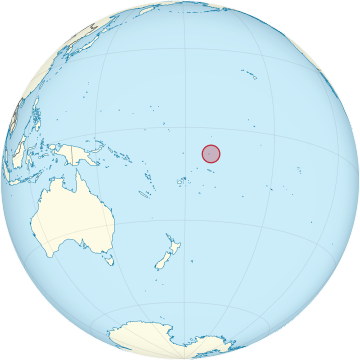List of butterflies of Tokelau facts for kids
Tokelau is a small country made up of three beautiful tropical islands in the South Pacific Ocean. It's a special place that is a territory of New Zealand. Even though it's small, Tokelau is home to many interesting creatures, including different kinds of butterflies! This article will tell you about some of the butterflies you might find fluttering around these sunny islands.
Contents
Discovering Tokelau's Butterflies
Butterflies are amazing insects known for their colorful wings. They start their lives as tiny eggs, hatch into caterpillars, then turn into a pupa (like a chrysalis), and finally emerge as the beautiful winged adults we all recognize. This process is called metamorphosis. Butterflies play an important role in nature, helping to pollinate plants as they fly from flower to flower, collecting nectar.
Butterfly Families in Tokelau
Scientists group living things into families based on their shared features. In Tokelau, some of the butterflies belong to a large family called Nymphalidae. This family is often called the "brush-footed butterflies" because their front legs are smaller and look a bit like brushes.
Nymphalidae Butterflies
The Nymphalidae family is very diverse, meaning it has many different kinds of butterflies. In Tokelau, you can find specific types within this family.
Danainae Subfamily
- Euploea lewinii bourkei: This butterfly is a subspecies of the Lewin's Crow butterfly. Butterflies in the Danainae group are often known for their slow, graceful flight and sometimes for having chemicals in their bodies that make them taste bad to predators.
Nymphalinae Subfamily
- Hypolimnas bolina pallescens: This is a subspecies of the Great Eggfly butterfly. These butterflies are known for their strong flight and often have bright colors or patterns on their wings.
- Junonia villida villida: This butterfly is a subspecies of the Meadow Argus. It is often found in open, sunny areas and is known for its distinctive "eyespots" on its wings, which can help scare away predators.


